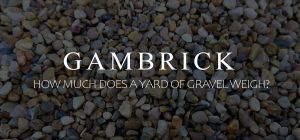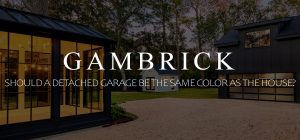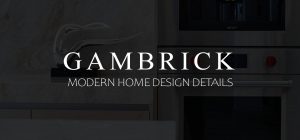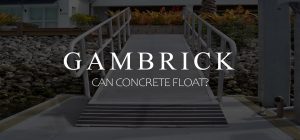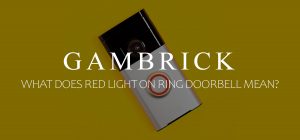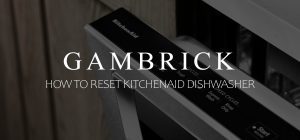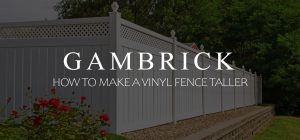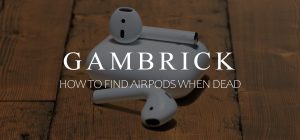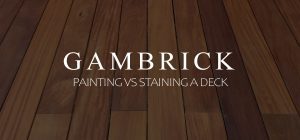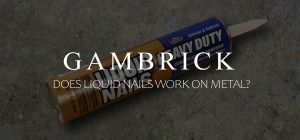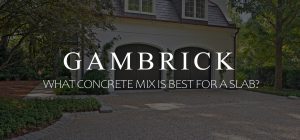
Are Concrete Walls Cheaper Than Brick?
Concrete block, solid poured concrete and brick walls are all types of masonry walls. They’re extremely strong, fire resistant, durable and pest proof. Masonry walls can support a lot of weight and take tons of abuse because of how dense they are, and they have a lot of natural thermal mass. This helps them retain heat from the sun during the day which keeps a home warmer at night. But they have a very low R-value which means they need to be insulated. Despite having a lot in common, concrete and brick walls are very different. In terms of cost, concrete walls are cheaper than brick because they take a lot less labor to build.
Bricks are small and require precise joint spacing to keep a uniform look. Each joint is usually tooled to create a consistent look over the entire wall. This can easily be thousands of bricks with tens of thousands of joints. Cinder blocks have tooled joints too but there are a lot less of them. Poured concrete walls don’t have joints which saves on labor costs.
In the past, brick was used as a structural building material. Many older homes and small buildings used brick to build load bearing exterior and interior walls. But that was a very expensive way to build. Modern homes use concrete to build load bearing foundation walls and brick as a decorative finish. This is a much cheaper way to build. Most new brick walls are actually solid concrete or cinder block walls with thin brick veneer cemented on top. By building this way you get the beauty and charm of brick with the affordability and strength of concrete.

How Concrete Vs Brick Walls Are Built
Poured solid concrete, cinder block and structural brick walls are all built on top of a solid concrete footing. Masonry walls all require a strong footing because they’re dense and rigid. If the footing shifts even a little, it could crack the wall.
Once the footing is done and cured strong enough to support a heavy load, the wall can be built.
In general, concrete walls do not have studs. They’re either solid concrete and stacked blocks. Both type typically have rebar reinforcement inside the wall for strength. However, some interior concrete walls that are not load bearing may have studs inside for additional support.
Concrete walls are fairly cheap to build, but wood walls are cheaper than concrete. However, when you account for all the finish work that must be done to complete a wood framed wall, concrete is actually the cheaper option.
Painting concrete walls is typically cheaper than brick because there’s less or no grout lines. Brick has a lot of mortar which can be an issue to paint unless you use a sprayer.
Poured Concrete Walls
Concrete is poured into a wall form. I pay about $125 per cubic yard of concrete or $1250 per full truck. Which is 10 yards of concrete. The forms are made out of wood or steel panels and assembled on site. They’re reinforced and very secure because concrete creates a lot of pressure as it’s poured.
Inside the forms are steel rebar which reinforces the wall from the inside.
Once the concrete sets, the forms are removed to reveal a solid concrete wall.
Many Modern style homes use poured concrete walls as a finished look. However most use them as a foundation wall and not an interior wall.
Concrete and rebar are fairly cheap but the forms are expensive. Forms add a lot to the cost of building poured walls. To buy them costs tens of thousands of dollars. Custom building them out of wood is expensive too considering the cost of lumber. You can rent them but that also adds thousands to the job.
One of the advantages to using poured concrete is the time savings. Once the forms are in place you can pour all the walls in a day. Concrete block and brick walls take 3-4 times more time to build vs poured concrete.
Concrete (Cinder) Block Walls
Cinder blocks are masonry blocks made from cement. They’re stacked in rows atop one another and joined with cement. The blocks are hollow which allows room for reinforcing rebar. Once built, the hollow cells can be filled solid with concrete.
A typical cinder block that’s 12″ x 8″ x 16″ costs around $3.25 per block.
Like brick, the joints are exposed and visible once the block wall is done. For this reason, joints must be even and uniform. The joints are all tooled smooth once the blocks are in place.
Concrete block walls don’t require forms because they’re built a block at a time.
Blocks, rebar and cement are cheap but block walls require a lot of labor and time. A typical 1500 sq.ft. foundation 8′ high can take a month to build. Contrast that with poured concrete which can take about a week for the same size foundation.
Brick Walls
Brick walls are built by stacking bricks atop one another in rows. The bricks are secured together with cement. When brick walls are built next to another wall, ties can be used which anchor the bricks to the wall.
Brick walls can be built in two ways, structural and non-structural. Either way requires stacking lots of 8″ x 4″ bricks with cement joints. Bricks cost around $75 each. The joints are then tooled for a uniform look. Proper tooling and joint spacing is a critical part of brick laying. There can potentially be thousands of bricks on a single home and they all need to have the same joint spacing.
Non-structural brick walls are built up against another wall. usually a concrete or stud wall. The bricks are installed the same but the wall doesn’t hold any weight.
Structural brick walls are actually two walls built back to back with some space in the middle. This makes the wall thick. The space inside the brick walls is usually filled with concrete. Because structural brick walls have two rows of brick with a concrete or cement core, they’re very strong but expensive to build.
Brick walls are the most expensive masonry wall you can build because of all the time and labor it takes to build and tool them.
Concrete Wall vs Brick Wall Cost
A standard 12″ x 8″ x 16″ concrete (cinder) block costs about $3.25 per block. A standard red clay 8″ x 4″ brick costs around $.75 cents per. The bricks are cheaper per brick compared to per block, but they’re much smaller.
Building a structural 12′ x 8′ wall, 96 sq.ft. would require about 700 bricks per side. That’s 1400 bricks total. Material for the bricks comes to $1,050 plus cement. Remember the inside of the wall also has to be filled with concrete or cement.
That same size 12′ x 8′ wall only requires 108 12″ x 8″ x 8″ cinder blocks total. The cost for materials is around $375 plus cement and rebar.
Poured concrete for a wall this size is even less. A 96 sq.ft. wall is around 2 yards of concrete. That’s about $300 worth of concrete plus rebar and forms.
As you can see, brick walls are more expensive than concrete. The cost in labor to stack and tool all those bricks is very expensive.
Masonry materials are relatively cheap. And you can mix your own concrete and cement to save even more money. But it’s labor intensive work that takes time and money to do well. It also takes skill. A good bricklayer is much harder to find than a mason that can build forms or stack block.
The labor cost for a professional bricklayer is more per hour than a mason that stacks block or builds forms. It’s a skill that requires time and experience to master. If you’ve got thousands of bricks to lay over a long span, it’s not easy to get them all to match.
Are concrete walls cheaper than brick? Yes, brick walls are more expensive to build. But there are other costs to consider.
Additional Costs
There are sometimes additional costs to consider when comparing a brick wall to concrete. The main consideration is the finished look of the wall. A brick wall is a completely finished look. Many people actually install bricks over a concrete wall because they like the look of brick. In some cases bricks can be painted but that’s about it. Concrete isn’t always a finished product.
Some designers use poured concrete walls as a finished wall, especially in Modern style homes or with board formed concrete. However, most designers cover concrete walls, especially block, with some other type of finish.
If you’re building a poured concrete or block wall and then finishing it with wood framing, drywall and trim, you have to consider those costs into the total price. When you compare the total cost of some concrete walls with brick, a brick wall may end up being cheaper.
In terms of maintenance, both brick and concrete are pretty much maintenance free. Although eventually you may have to repair some brick and mortar or cracked concrete. But it’s not an annual maintenance cost.

Thin Brick Vs Concrete Walls
Thin brick is a veneer that’s installed onto a wall to provide the look of real brick. They’re very thin slices of brick, usually less than 1/2 inch, and are installed using cement or glue.
Thin brick veneer is attached to a wall similar to tile. Once in place, the joints are filled with cement using a grout bag. When the cement starts to harden, the joints are tooled to create a uniform design. However, in some cases the cement is left thick to create a more rustic look called German Schmear.
Thin brick is strictly cosmetic and in some cases installed over a concrete wall. So to compare the cost of thin brick to concrete walls you have to also consider the cost of the wall the brick is attached to.
Thin brick over wood framing is generally cheaper than a cinder block wall but about the same as solid concrete.
I recommend using cement board like Hardie behind the thin brick. It’s very strong and provides a good surface for the bricks to adhere to.
Using thin bricks can save you the cost of other wall finishes like drywall and trim. In most cases you would only use one or the other. But I have seen designs where thin bricks were paired with wood trim or sections of drywall.
Thin brick is available at Home Depot for around $56 per box which covers approximately 7 sq.ft. That’s about $7.50 per sq.ft. of wall space. Then you have to figure in a little bit more for cement grout. Corners are sold separately. They’re about $50 per box which covers approximately 5 1/2 linear feet.
Poured Concrete Wall Vs Brick Wall Cost
A poured concrete wall is about 40% – 50% cheaper to build than a structural brick wall. Structural brick walls are expensive because they actually require two brick walls built back to back with a center that’s filled with cement, concrete or block. They require a lot of labor and an experienced bricklayer to build. Each brick must be individually stacked with matching joint spacing. Many brick walls actually have a block, poured concrete or wood wall hidden inside them.
All the joints are filled with cement and tooled for a uniform look. It’s not easy to build a long and high brick wall where all the joints and spacing match perfectly. It takes a lot of skilled labor and time which costs money.
Brick walls are basically built out of just bricks and mortar. And both materials are fairly cheap. But it’s the extremely high cost of labor that makes brick walls so expensive.
Concrete walls are much cheaper to build. Especially if you already own the forms. Concrete costs me around $150 per yard. Then there’s rebar which is fairly cheap. An entire 1500 sq.ft. foundation with 8 ft. high walls uses about 2,000 worth of rebar.
The main cost of a poured concrete walls are the forms. Buying them is very expensive and then you need a way to store and transport them. You can rent them but that’s very expensive too.
If you build the forms on site that costs time and money. Wood isn’t cheap these days and forms need to be built super strong to prevent blow outs.
I’ve built structural brick walls and poured concrete walls, in the end brick tends to be at least 50% higher due to the extra labor costs involved. This gets even more expensive as the walls get higher.
Is Concrete Stronger Than Brick
Brick can be slightly stronger than concrete blocks of the same size. Some clay bricks have a compressive strength that’s higher than concrete blocks.
However, it depends on the type of brick and block you’re comparing. Bricks are very small when compared to a modern cinder block. A 12″ wide cinder block reinforced with rebar and filled solid with concrete can support more weight than a single 4″ wide clay brick. But structural brick walls are built with two rows of bricks stacked along side each other with a solid core.
If you compare the strength of a typical 8″ thick cinder block wall to an 8″ thick structural brick wall with a solid core, the brick wall is slightly stronger. But it depends largely on the brick you use and the mortar.
Not all bricks are created the same. Some are much stronger than others. If you compare the average block to the average brick, the block would be stronger. However, the strongest bricks are slightly stronger than block.
Mortar is very important too because both brick and block walls use it to hold them together. Weak mortar joints are a common area where walls can fail.
But then there’s poured concrete to consider.
A solid concrete wall with rebar reinforcement is stronger than a brick wall. All of out buildings, bridges, dams and highways use solid poured concrete as a foundation material. The Modern world wouldn’t be possible without it. And solid concrete walls don’t have mortar joints to consider. However, the concrete needs to be mixed correctly to be strong. Not all concrete is created equal and some mixes are much weaker than others.

Insulation
Masonry walls have very low R-values. This includes solid concrete, block and brick. The materials just don’t provide much insulation on there own. So other forms of insulation need to be used along side masonry to boost it’s R-value.
R-value is a number that represents how well insulated a material is. The standard R-value we use here in NJ is R-19. But masonry walls have an R-value less than 1. So insulation must be added to provide the necessary R-value that they lack on their own.
- Brick walls have an insulation value, or R-value, of 0.2 per square inch. That’s about an R-4 per brick.
- Plywood has an R-value of 2.5. Most brick homes are actually wood-framed with brick as a siding material. They have typical wall studs with insulation inside.
- Standard 8 inch concrete block walls have an R-value of 0.08 per square inch. That’s about 2.5 per block.
- Solid concrete walls 8 inches thick have an R-value of around 1.
As you can see, brick is the best insulator when compared to solid concrete or cinder block. However it’s still very poor and needs additional insulation to meet current building code.
Brick, cinder block and concrete are not very energy efficient on their own. However, they have the natural ability to store and release heat slowly over time. This can be a huge benefit if you pair masonry walls with insulation. The walls store heat by day and release it into the home by night. This can cut down on energy bills each month.
Additional insulation can be used to keep heat inside the home which lowers active heating and cooling costs.
Which Is Better Brick Or Concrete Walls?
Which wall is better, brick or concrete, depends on what you want to achieve from the wall.
Price. In terms of cost, concrete provides a much better value. It’s cheaper and generally stronger than brick. especially if you’re building a solid concrete wall. Brick walls take a long time to build and require a skilled bricklayer and not a typical mason. This is why most brick walls you see these days are cosmetic and not structural. Structural brick walls are too expensive to build and don;t provide any real value compared to concrete.
Strength. Poured concrete is the winner here too. They’re stronger than brick walls, cheaper and faster to build. However, you need to use the proper concrete. Not all concrete mixes are created equal.
Insulation. Brick provides more natural insulation, R-4, than concrete, R-1. However, it’s still not nearly enough to meet code. Both brick and concrete need additional insulation.
Looks. This is very dependent on the style of house you’re building. Brick is a finished look. Once a brick wall is built it’s not covered by another finish like plaster or drywall. In fact. many concrete walls are covered in brick because of how beautiful they look. But many homes, especially Modern styles, use poured concrete or board form concrete as a finished wall without additional coverings.
So which is best really depends on what type of home you’re building. Not many homes use cinder block as a finished wall design so that would be the loser here.
Gallery
Here’s a small gallery of ideas filled with a few of my favorite brick and concrete wall pics.

Board formed concrete walls with floating concrete steps.

Detail view of concrete exterior walls with real wood siding accents.

Beautiful poured concrete walls with stone and wood siding accents.

Red brick walls flowing into the home’s interior.
Summary: Are Concrete Walls Cheaper Than Brick?
Concrete block, solid poured concrete and brick walls are all types of masonry walls. They’re extremely strong, fire resistant, durable and pest proof. Masonry walls can support a lot of weight and take tons of abuse because of how dense they are, and they have a lot of natural thermal mass. This helps them retain heat from the sun during the day which keeps a home warmer at night. But they have a very low R-value which means they need to be insulated. Despite having a lot in common, concrete and brick walls are very different. In terms of cost, concrete walls are cheaper than brick because they take a lot less labor to build.
Bricks are small and require precise joint spacing to keep a uniform look. Each joint is usually tooled to create a consistent look over the entire wall. This can easily be thousands of bricks with tens of thousands of joints. Cinder blocks have tooled joints too but there are a lot less of them. Poured concrete walls don’t have joints which saves on labor costs.
In the past, brick was used as a structural building material. Many older homes and small buildings used brick to build load bearing exterior and interior walls. But that was a very expensive way to build. Modern homes use concrete to build load bearing foundation walls and brick as a decorative finish. This is a much cheaper way to build. Most new brick walls are actually solid concrete or cinder block walls with thin brick veneer cemented on top. By building this way you get the beauty and charm of brick with the affordability and strength of concrete.
If you have any questions about concrete or brick walls, email any time.

John Mazzuca | About | More Posts |
Custom Home Builder
John Mazzuca is a custom home designer and builder at Gambrick with over 25 years experience in the construction industry. John has designed, built and/or remodeled hundreds of homes, small buildings, and commercial projects. He writes about business, real estate, home building, and household electronics. His work has been featured in Fox Business, Better Homes & Garden, House Beautiful, and more.
